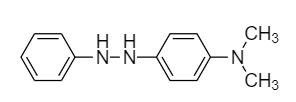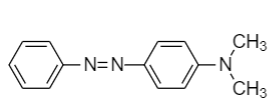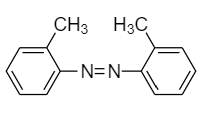
Answer
387.9k+ views
Hint: We know that azo-coupling reactions: These reactions are types of electrophilic substitution reactions in which diazonium salt plays a role of an electrophile and attacks the para position of the activated aromatic compounds and formation of azo-dye takes place.
Complete answer:
In the given reaction sequence, aniline is taken as the reactant which is an activated aromatic compound because of the presence of $ N{H_2} $ group which stabilizes the cationic intermediates formed between the substitution reaction by showing the $ + I $ effect.
So, the reaction mechanism followed is given below:
Step-1: When the primary aromatic amines like aniline react with nitrous acid in the presence of dilute hydrochloric acid, then diazonium salt is formed. This reaction is known as diazotization reaction. The reaction is as follows:

Hence product B formed is benzene diazonium chloride.
Step-2: When a diazonium compound reacts with another aromatic compound in cold conditions, then a coupling reaction takes place along with the removal of hydrochloric acid. The compound formed after the reaction is known as azo dye compound. The reaction is as follows:

Hence product C formed is methyl yellow.
Therefore, option (B) is the correct answer.
Note:
Remember that in coupling reactions, the electrophilic attack of the diazonium compound is always preferred at the para position of the aromatic compound. But in case if the para position is already occupied by a functional group, then attack will take place at the ortho position of the aromatic compound.
Complete answer:
In the given reaction sequence, aniline is taken as the reactant which is an activated aromatic compound because of the presence of $ N{H_2} $ group which stabilizes the cationic intermediates formed between the substitution reaction by showing the $ + I $ effect.
So, the reaction mechanism followed is given below:
Step-1: When the primary aromatic amines like aniline react with nitrous acid in the presence of dilute hydrochloric acid, then diazonium salt is formed. This reaction is known as diazotization reaction. The reaction is as follows:

Hence product B formed is benzene diazonium chloride.
Step-2: When a diazonium compound reacts with another aromatic compound in cold conditions, then a coupling reaction takes place along with the removal of hydrochloric acid. The compound formed after the reaction is known as azo dye compound. The reaction is as follows:

Hence product C formed is methyl yellow.
Therefore, option (B) is the correct answer.
Note:
Remember that in coupling reactions, the electrophilic attack of the diazonium compound is always preferred at the para position of the aromatic compound. But in case if the para position is already occupied by a functional group, then attack will take place at the ortho position of the aromatic compound.
Recently Updated Pages
Who among the following was the religious guru of class 7 social science CBSE

what is the correct chronological order of the following class 10 social science CBSE

Which of the following was not the actual cause for class 10 social science CBSE

Which of the following statements is not correct A class 10 social science CBSE

Which of the following leaders was not present in the class 10 social science CBSE

Garampani Sanctuary is located at A Diphu Assam B Gangtok class 10 social science CBSE

Trending doubts
Which are the Top 10 Largest Countries of the World?

Fill the blanks with the suitable prepositions 1 The class 9 english CBSE

How do you graph the function fx 4x class 9 maths CBSE

Give 10 examples for herbs , shrubs , climbers , creepers

Change the following sentences into negative and interrogative class 10 english CBSE

Difference between Prokaryotic cell and Eukaryotic class 11 biology CBSE

The Equation xxx + 2 is Satisfied when x is Equal to Class 10 Maths

Write a letter to the principal requesting him to grant class 10 english CBSE

What organs are located on the left side of your body class 11 biology CBSE









